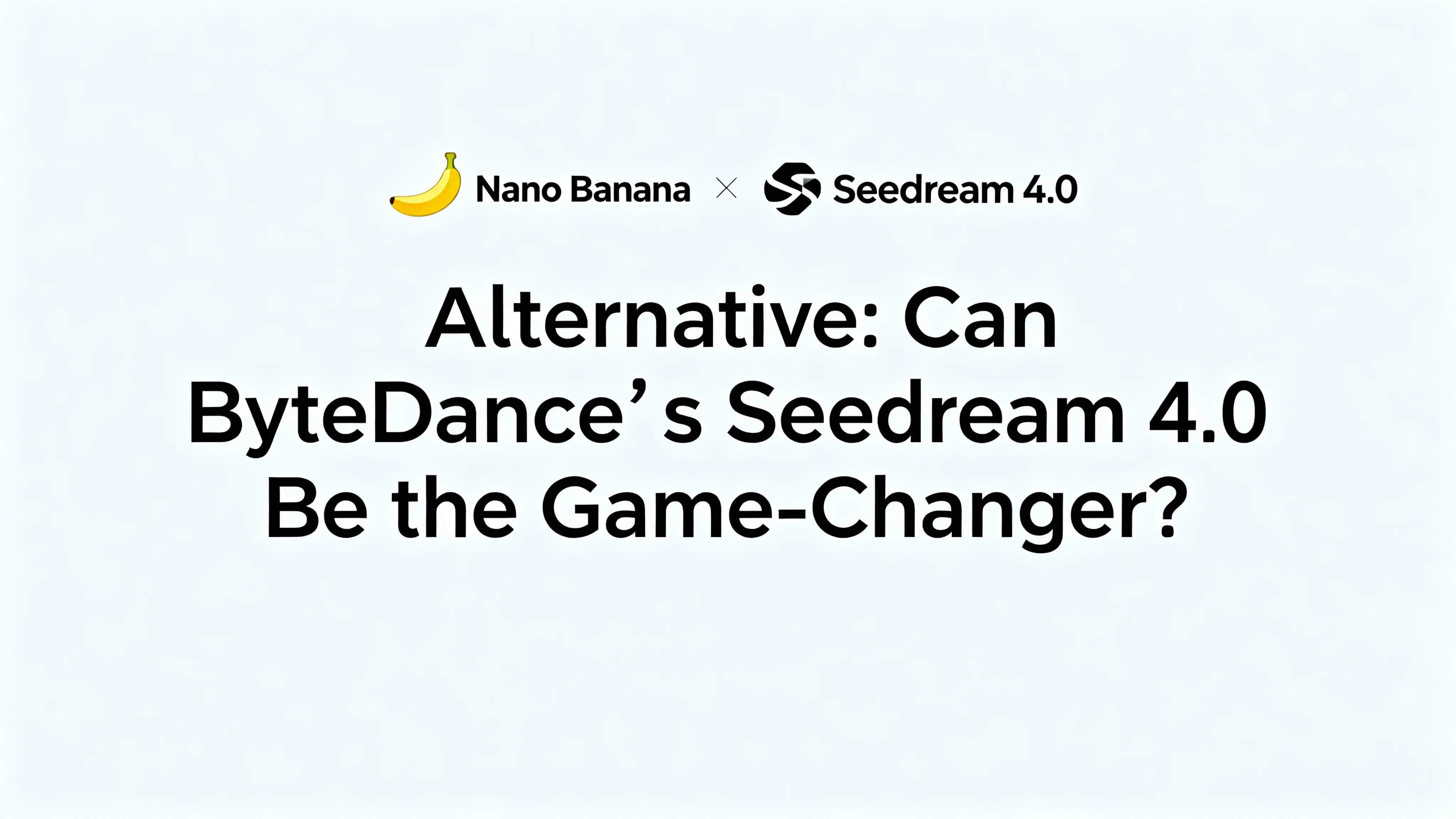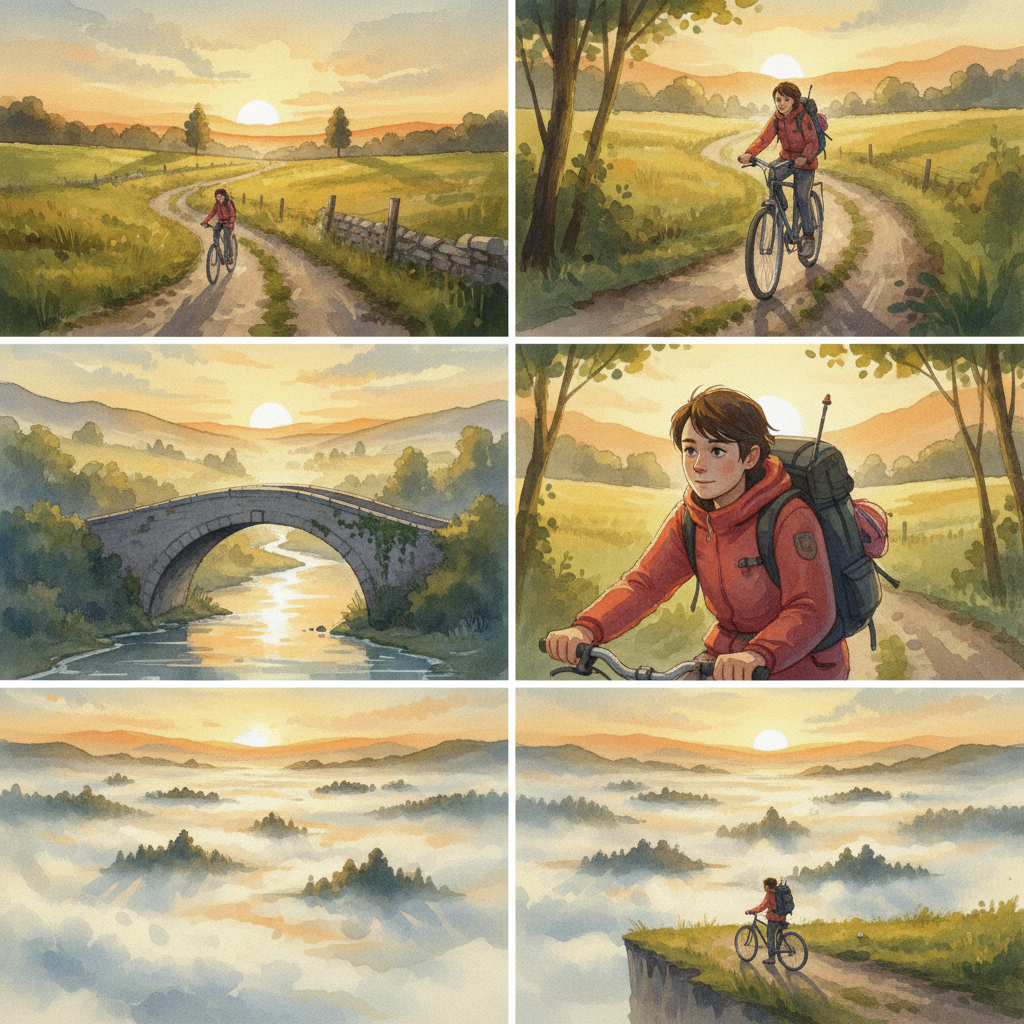Nano Banana Alternative: Can ByteDance’s Seedream 4.0 Be the Game-Changer?
Explore how ByteDance’s Seedream 4.0 positions itself as the leading nano banana alternative. Learn about its speed, features, and creative advantages over Google’s Gemini-based nano banana model.

Ever since Google’s Gemini 2.5 Flash Image—better known as “nano banana”—set a global benchmark for lightning-fast, text-driven image creation, the world of AI imaging hasn’t stopped buzzing. But here’s the question many insiders are asking now: is there a true nano banana alternative?
Enter ByteDance’s Seedream 4.0 — a creative powerhouse that some early testers believe might not only match nano banana’s capabilities but surpass them in artistic flexibility, resolution, and multi-image generation. Ready for a closer look? Let’s dive into how this Chinese-made imaging model is rewriting what we expect from next-generation AI art tools.
🌌 What Is This So-Called Nano Banana Alternative?
When we talk about finding the perfect nano banana alternative, we’re really asking for three things: speed, accuracy, and creative control. ByteDance’s Seedream 4.0 ticks all three boxes.
This new multimodal image generation model aims to provide seamless integration of text-to-image creation, smart editing, and high-resolution rendering—all powered by a mixture-of-experts (MoE) framework that can produce 2K images in roughly 1.8 seconds. It’s a new level of speed and control that pushes past standard diffusion models.
Beyond buzzwords, what makes Seedream 4.0 exciting is its creative agility. Instead of forcing designers to chain multiple apps together, it combines everything—from ideation to final render—into one continuous workflow. That’s what positions it as a realistic nano banana alternative for professionals who value coherence and speed.
👉 If you want to try it firsthand, check out Seedream 4.0 on MixHub AI — it’s one of the few platforms offering direct access to ByteDance’s closed beta.
⚙️ How Seedream 4.0 Works: The Tech Behind the Nano Banana Alternative
Seedream 4.0 was developed with multi-input awareness, allowing users to upload up to six reference images and generate as many as nine related outputs in one go. That’s a massive leap from most Western diffusion models.
Here’s what defines it:
- 🚀 Speed that rivals nano banana — generates 2K-resolution images in only 1.8 seconds.
- 🧠 Multimodal architecture — fuses text, visual, and reference inputs without breaking consistency.
- 🎨 Natural-language editing — say “make it sunset lighting” or “remove the background,” and the model executes.
- 💡 Batch creation mode — create a full storyboard, sequence, or product series in one pipeline.
- 🌍 True bilingual prompt support — handles both English and Chinese smoothly.
In effect, Seedream 4.0 turns what was once piecemeal (generation → edit → re-render) into one flow. That’s not a trivial upgrade—it’s a design philosophy shift that makes it feel like a genuine nano banana alternative rather than a clone.
🧠 Early Tester Insights: Why This Nano Banana Alternative Works
Early testers have been impressed by how precisely Seedream 4.0 listens to long, descriptive prompts. While nano banana is known for near-flawless realism, it can struggle with artistic reinterpretation or storyboarding. Seedream answers that gap.
Three highlights consistently reported by users:
- Sharper Text-to-Image Understanding — no misaligned faces or inconsistent styles across panels.
- Faster Edits — object replacement and lighting adjustments in seconds.
- Multi-Reference Control — up to six sources to guide character or style continuity over storyboards.
It’s that last point that might just cement Seedream 4.0’s status as the nano banana alternative that creators have been waiting for.
If you’d like to test similar prompts, you can experiment now via Seedream 4.0 on MixHub — the interface supports natural-language commands and instant image previews.
🎬 Real-World Use Cases: How the Nano Banana Alternative Performs
So where does this breakthrough model really shine? ByteDance’s Seedream 4.0 is being positioned for professional creative workflows as well as individual creators who live for iteration.
✨ Designers and Marketers
Seedream 4.0 enables near-instant, publication-grade visuals without refining layers manually. A fashion brand could generate a set of model shots wearing different color variants of the same dress, keeping skin tone and background consistent — all in under two minutes.

🎨 Comic Artists and Storyboarders
For narrative creators, consistency is everything. The model’s ability to remember a character’s facial features and reuse them across different art styles means storyboarding and visual continuity become effortless.

🏠 Interior and Architectural Visualization
Designers can upload sketches, describe lighting scenarios, and instantly get high-resolution renderings at 2K or even 4K — complete with editable architectural details.

Each of these workflows exemplifies what people think of when searching for a nano banana alternative — not a copy of Google’s tech, but a tool tuned for creative independence.
⚡ Nano Banana vs. Seedream 4.0: Two Paths to AI Creativity
The nano banana alternative narrative isn’t just hype. In head‑to‑head comparisons, here’s the gist of how both stand apart:
- Speed: Both hit image-ready speeds under two seconds, but Seedream 4.0 boasts larger 2K‑4K native outputs.
- Flexibility: Nano banana is laser-sharp at realism; Seedream 4.0 shines in creative flexibility and artistic variations.
- Editing Power: Seedream adds natural‑language transformations, like “remove the crowd” or “make lighting cinematic,” without masks.
- Multi‑Image Generation: Only Seedream 4.0 can generate a cohesive set of up to nine related visuals from one prompt.
It’s not about replacement—it’s about expansion. That’s what makes Seedream 4.0 the most credible nano banana alternative yet.
🧩 Prompting Tips to Get the Best from This Nano Banana Alternative
To unleash the full strength of Seedream 4.0, follow these advanced prompting strategies:
- Use optical structure. Structure commands like: “Add a red scarf to the model; maintain expression.”
- Refine with follow‑ups. Use short iterative updates: “Darken background slightly” → “Add soft rim light.”
- Specify fixed traits. Emphasize what must stay the same — “Keep hairstyle; change jacket color.”
- Invoke batch creation. Add phrases like “series of 5 shots” or “set of variations” to trigger grouped outputs.
- Include style tags. Phrases such as “in watercolor illustration style” or “photorealistic studio lighting” help lock tone.
💬 Final Thoughts: The Rise of the Nano Banana Alternative
While Google’s nano banana model set the benchmark for AI image editing speed and accuracy, ByteDance’s Seedream 4.0 is quickly shaping up to be a strong nano banana alternative that doubles down on three things—resolution, artistic versatility, and creative flow.
Its speed rivals nano banana, its multi-image capabilities outpace most Western counterparts, and its bilingual support expands the field for creators worldwide. We’re witnessing the dawn of a new phase where Chinese AI imaging models stand toe-to-toe with Silicon Valley’s best.
So whether you’re a designer tired of juggling multiple tools or an AI enthusiast chasing creative excellence, it’s time to explore what this challenger can do.
🚀 Try Seedream 4.0 at MixHub AI and judge for yourself if this next-gen technology truly earns the title of the ultimate nano banana alternative.

